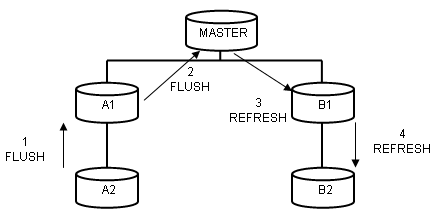Administrator
User Guide
Multiwrite Databases and Extracts : Using Extracts : Flushing
When an extract user makes changes and saves them, they are stored in the extract. The changes can then be flushed, which means that they will be made available to the parent extract.

